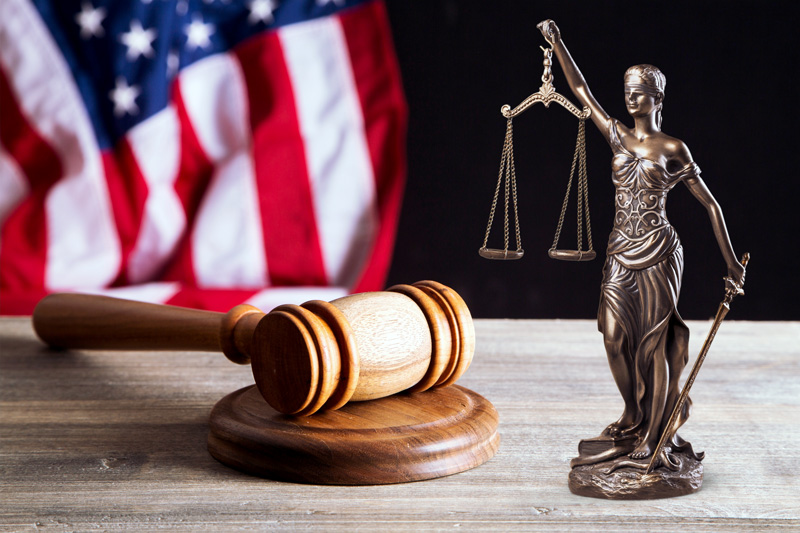Over the past 7-15 years, many forensic/clinical professionals working in the US criminal justice system recognize the need for significant change within the US criminal justice system for autistic individuals to be treated humanely and with dignity. “Recently, a diverse team of autistics, family members, researchers, criminal justice system professionals, and policymakers formed the Global Autism and Criminal Justice Consortium” (Lindsay Lawer Shea DrPH, 2021). The Global Autism and Criminal Justice Consortium,1 under the leadership of the Policy and Analytics Center, AJ Drexel Autism Center, Drexel University, released a policy brief in April 2022. This policy brief came after a world summit regarding the increasing rate with which individuals with autism are encountering the criminal justice system globally was held in October 2020. The policy brief outlines recommendations for change that span the US criminal justice system as well as criminal justice systems worldwide.

A case review and analysis of my forensic cases to date shows, autistic people are being overlooked and not given the support they need during initial law enforcement interactions and in the courts by attorneys and judges at the state and federal level. In addition, because of neurological, cognitive, and behavioral differences that exist in autistic individuals, research suggests that “autistic individuals may have more negative impact on autistic people’s mental health than that of non-autistic people.”2
Social communication differences are regularly observed by clinical/medical professionals familiar with autistic individuals in the criminal justice system. However, in the US criminal justice system, even when an autistic individual verbalizes their autism diagnosis early in the legal process, the arrest, criminal processing, which includes interviewing, often proceed mechanically despite the autistic person not having appropriate support. A 2022 United Kingdom study suggests that attorneys reported that less than half (48%) their ASD clients were treated as “vulnerable adults.”3 Similarly, in the same United Kingdom attorney study,4 when the UK cases got to court and there was a seated jury, only (53%) were informed that the defendant was on the autism spectrum and how that may affect their presentation or communication in the courtroom.
This is problematic for the criminal justice system on many levels. First, high functioning autistics (HFA) are often proficient with “masking,” a term defined as, “hiding or disguising oneself in order to better fit in.” (National Autistic Society-NAS, 2022) Second, the accused autistic individual’s disrupted routine by law enforcement is inevitable. This disruption, to most accused people who are typically developing is alarming, but to an autistic individual the aftereffects are often felt over the long-term. Lastly, autistic individuals do not do well with novelty or new environments and new people. Law enforcement purposely harnesses the power of surprise in arresting accused individuals. This is often to make the process less dangerous for everyone involved, but for an autistic individual, this can create exaggerated reactions and effects. Unsupported social communication for an autistic individual is at best disheartening and disconcerting, but in the worst-case scenario can be a violation of an autistic individual’s civil rights. Civil rights violations are many times addressed in legal cases after the fact because autistic individuals do not spontaneously understand communication, especially under duress. However, high functioning autistics (HFA) do report that they can understand many social concepts but do not understand social concepts until processing the social interaction after the event, with one of their trusted persons.
Another pre-trial concern for autistic individuals is a pronounced history of social failure. Many autistic individuals have easily identified developmental histories of social failure dating back to preschool or earlier. Very shortly after an autistic child is introduced to the outside world or community, an identified set of abnormal, odd, or idiosyncratic behaviors can be noted by caregivers and peers outside the family. These noted differences frequently lead to the diagnostic process.
Upon receiving a formal diagnosis of an autism spectrum disorder (ASD),5 which the US Center for Disease Control’s 2020 surveillance suggests is 1 in 36 children, and which diagnosis is commonly made by age 8 in the US, begins documentation of the autistic individual’s recognizable atypical development pattern. Atypical development is often accompanied by alienation, rejection, ridicule, and in many cases constant teasing or “bullying” by the autistic child’s peers. Differentiating teasing and bullying can be recognized as, “teasing can be a type of communication, a social exchange, either positive or negative, but bullying is meant to hurt.”6
This pattern of social failure starting at a very young age leaves many accused autistic individuals not equipped to handle the direct and aggressive stance of law enforcement during an arrest or the ensuing investigation, the need to answer questions quickly in rapid succession, or the lack of familiar people present to support them in the US criminal justice system. Autistic individuals are prone to extreme detachment or fight or flight responses when they cannot manage their environment.
The vast difference between a young child with autism being ill equipped to handle social interactions and an accused autistic individual in the US criminal justice system is clearly observable. An autistic young child will break down crying or throwing a fit. This behavior signals to the caregiver to intervene. In the US criminal justice system, an autistic adolescent, young adult, or adult does not have anyone to intervene, despite underdeveloped or missing coping skills. Intense exchanges and aggressive tactics by law enforcement, attorneys, and the courts can quickly become abusive.
As a forensic/clinical psychologist for more than 20 years working in the United States criminal justice system in both state and federal courts, I recognize that high stakes criminal cases are often handled in spite of individuals with autism. Other recent autism research is reaching this conclusion as well: “Autistic individuals are encountering the criminal justice system as victims, offenders, and witnesses at high rates.”7 While recent research is focusing on policy change and system wide change, there are also individual changes that can be implemented. For example, while criminal justice system professionals recognize that neither state or federal justice systems currently have programs specifically designed to meet the needs of individuals with autism, it may be appropriate to give more training to law enforcement about identification of autism spectrum disorders. It may also be wise for prosecutors and judges to consider the impact of an individual’s autism on their thinking and actions related to a crime prior to issuing a warrant, indicting an accused individual, or arresting the accused. Ultimately, it benefits the US criminal justice system to understand each individual’s autism uniquely and consider their unique traits and behavior from an autism perspective instead of moving forward with the legal process, arresting, detaining, and more often than not, traumatizing an individual with autism, simply on the neurotypical face value of their behavior. I hope this overview impresses others to support more research and reform in the United States criminal justice system.
Tyler T. Whitney, PsyD, is a Licensed Clinical Psychologist and Adjunct Assistant Professor for the Department of Psychiatry and Behavioral Sciences at Emory University School of Medicine. Dr. Whitney also has a private practice. For more information, call (770) 645-5846 and visit www.drwhitney.org.
Footnotes
- Shea, LL, DrPH, Director, Policy and Analytic Center, AJ Drexel Autism Institute, Drexel University, Philadelphia, PA. ljl42@drexel.edu
- 3. 4. Slavny-Cross, R., Allison, C., Griffiths, S., & Baron-Cohen, S. (2022). Autism and the criminal justice system: An analysis of 93 cases. Autism Research, 15(5), 904–914. DOI: 10.1002/aur.2690
- Maenner MJ, Warren Z, Williams AR, et al. Prevalence and Characteristics of Autism Spectrum Disorder Among Children Aged 8 Years — Autism and Developmental Disabilities Monitoring Network, 11 Sites, United States, 2020. MMWR Surveill Summ 2023;72(No. SS-2):1–14. DOI: http://dx.doi.org/10.15585/mmwr.ss7202a1
- Lee, Andrew, M.I. What is the Difference Between Teasing and Bullying (2022), Understanding.org. https://www.understood.org/en/articles/difference-between-teasing-and-bullying
- Shea, L. L., Cooper, D., & Wilson, A. B. (2021). Preventing and improving interactions between autistic individuals and the criminal justice system: A roadmap for research. Autism Research, 14( 10), 2053– 2060. https://doi.org/10.1002/aur.2594







[…] go through the different stages of the criminal process mechanically, without being treated as ‘vulnerable individuals’ and offered the necessary support. ADA lists Autism as a disability, and still, after a diagnosis […]